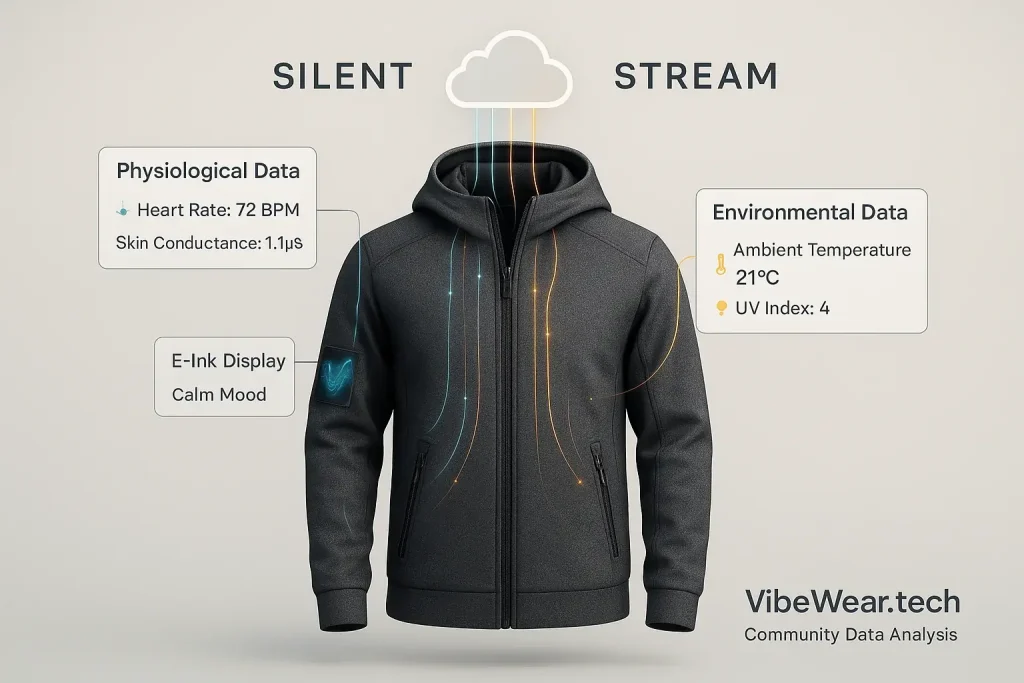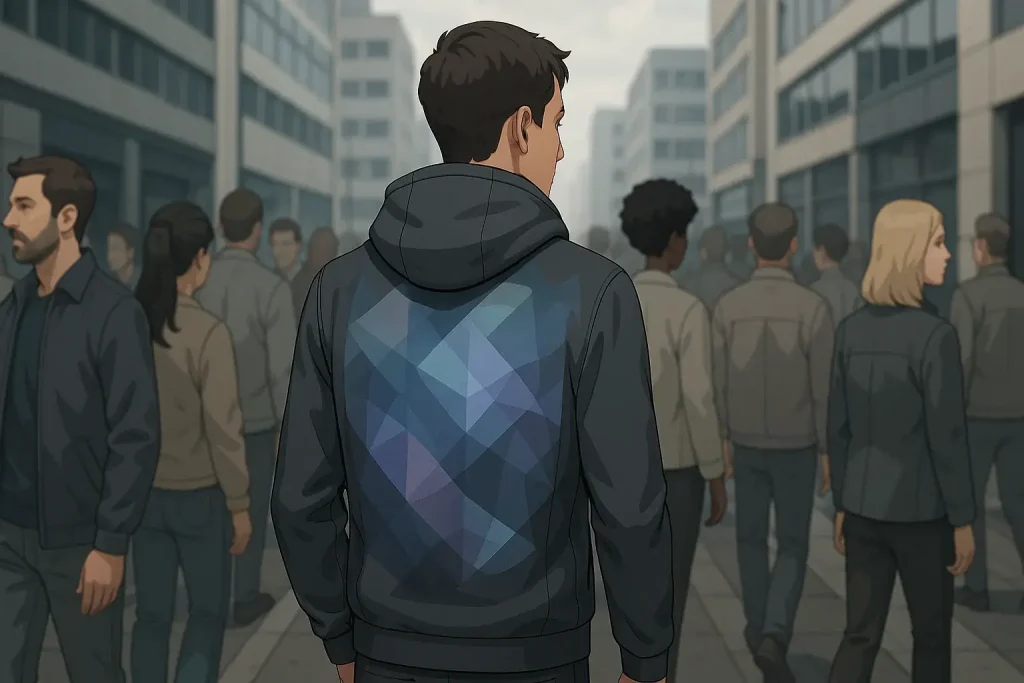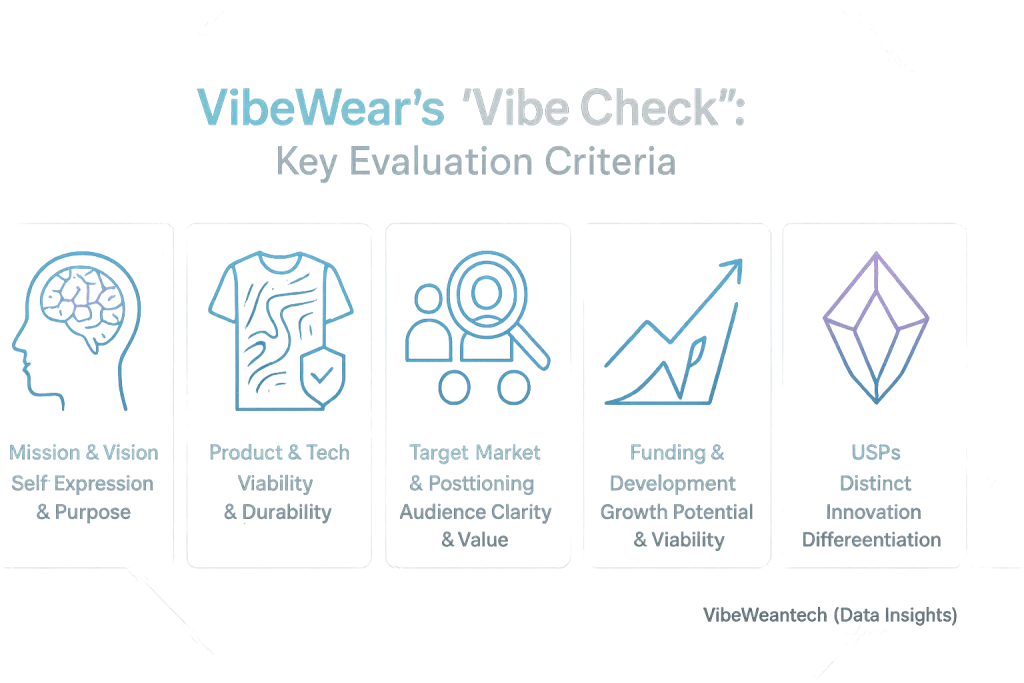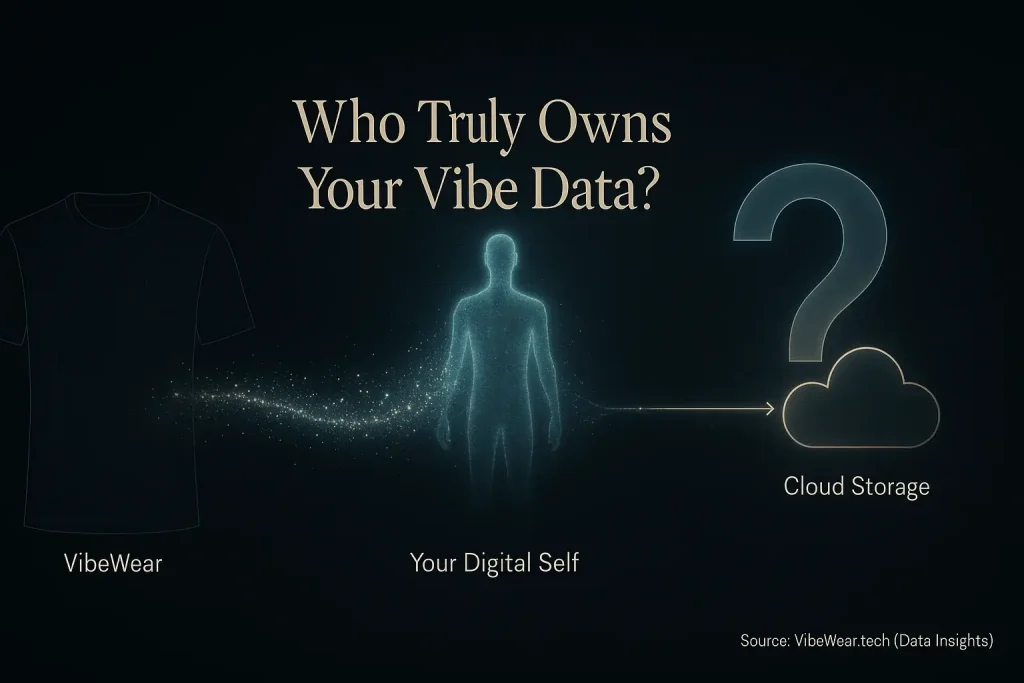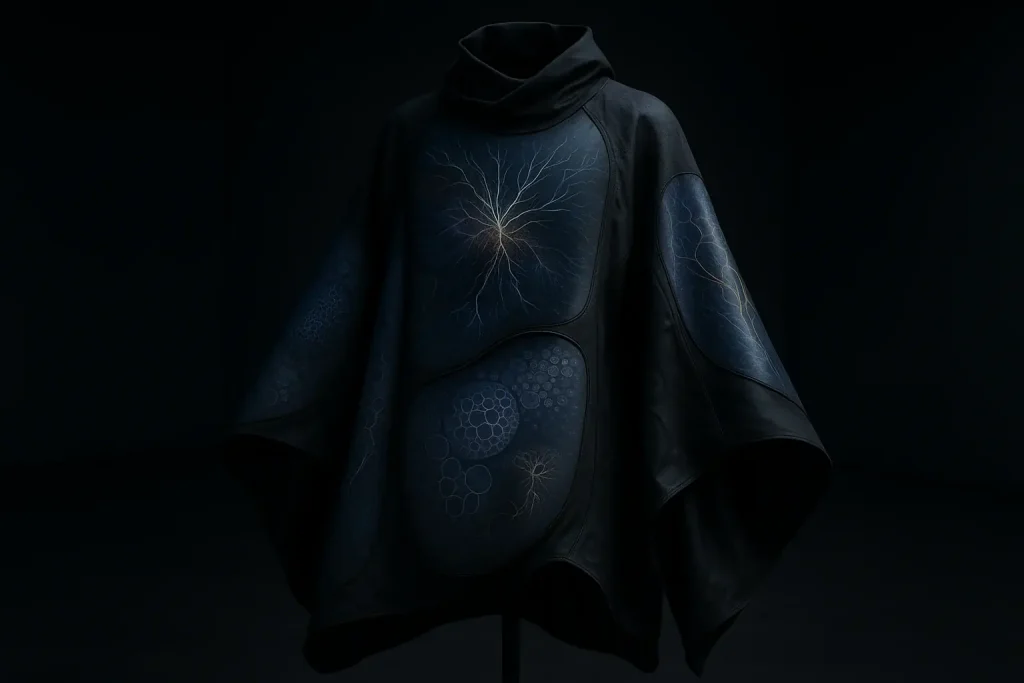Bridging the Gap: Why Connecting Sensors to E-Ink is Your VibeWear Superpower
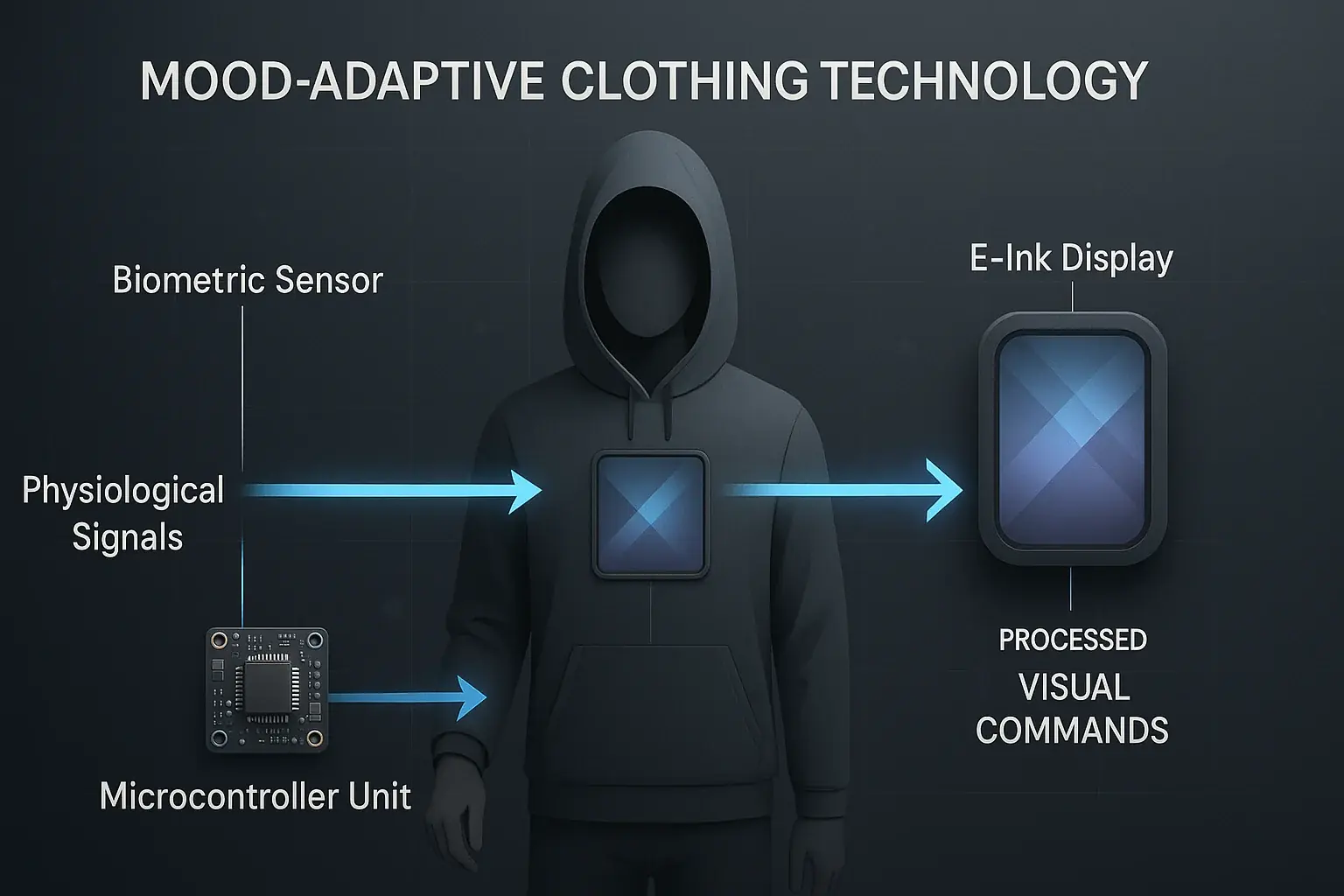
Wish your outfit got your mood? Imagine clothes that instantly reflect your inner state. Sensor-E-Ink interfacing is the core technology enabling this. This crucial link translates raw biometric signals from your body. That data then becomes dynamic visual expression on your E-Ink enabled streetwear.
Why does this connection matter for DIY fashion tech creators? It is not mere technical wizardry. This interfacing forms the heart of true personalization and responsive design. Individual components possess potential. Their real power, an unspoken truth VibeWear sees, unlocks when they communicate.
This guide focuses on that vital bridge. We explore the conceptual journey. A physiological signal transforms into a visible pixel change. VibeWear's analysis demystifies this sensor-to-screen pathway, empowering DIY innovators. You gain a creative superpower.
Decoding Your Vibe: How Sensors Speak in Data (Analog vs. Digital)
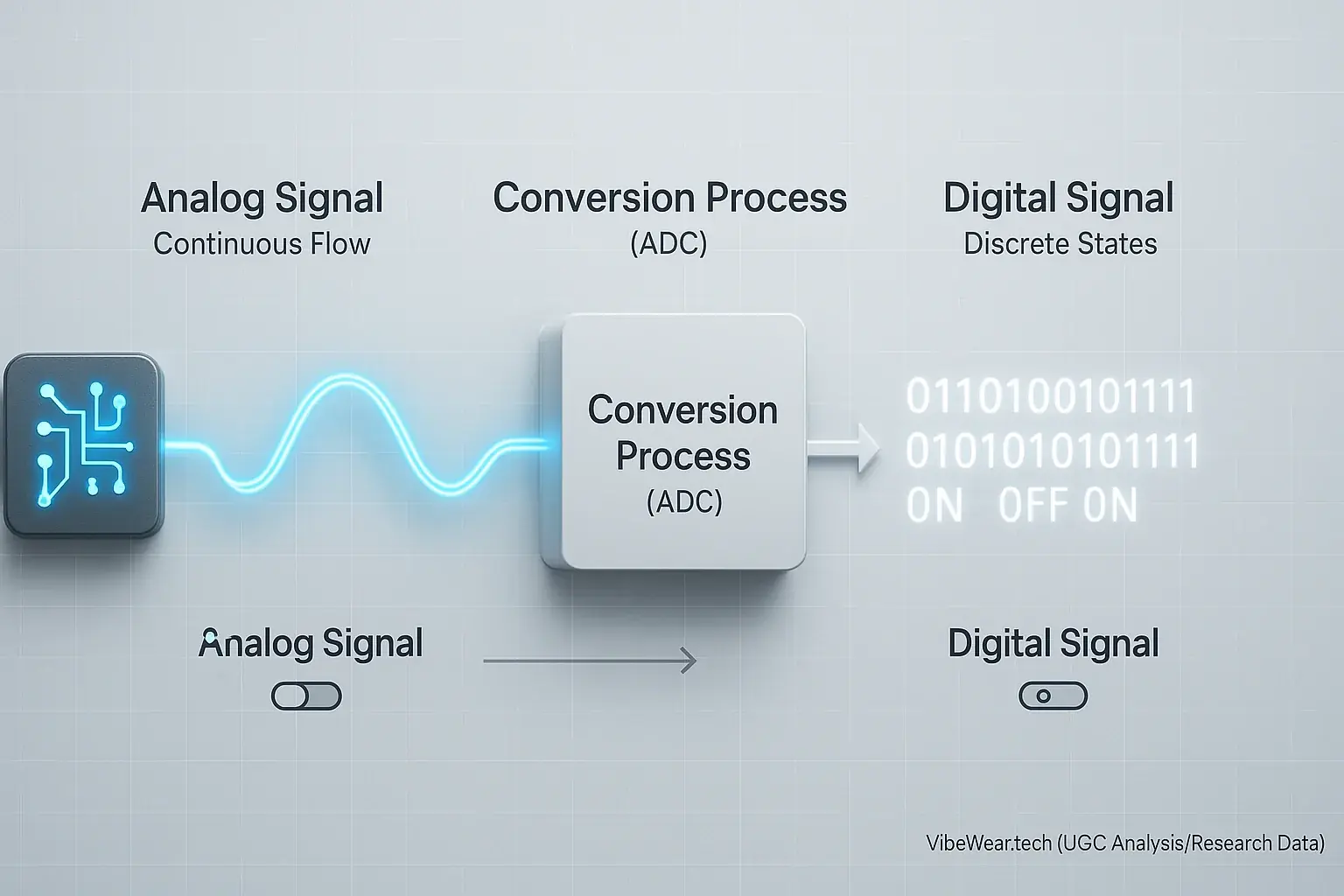
How does tech know your mood? Sensors are VibeWear's eyes and ears. They capture raw data from your body or the environment around you. Your skin's sweat changes, or room light levels, become measurable signals.
Data types often confuse. Analog signals differ from digital signals. Analog signals resemble dimmer switches; they offer continuous flow of information. Digital signals act like on/off buttons, providing distinct, separate states. Many DIYers get tripped up here. They expect nuanced mood curves from their chosen sensor. Their sensor might only output a binary 'stressed' or 'calm' signal.
Microcontrollers then interpret these electrical signals. A conversion process translates raw sensor output into understandable data for the system. Grasping this initial data step is fundamental. This knowledge unlocks truly adaptive VibeWear projects.
The Outfit's Brain: How Microcontrollers Process Your Vibe
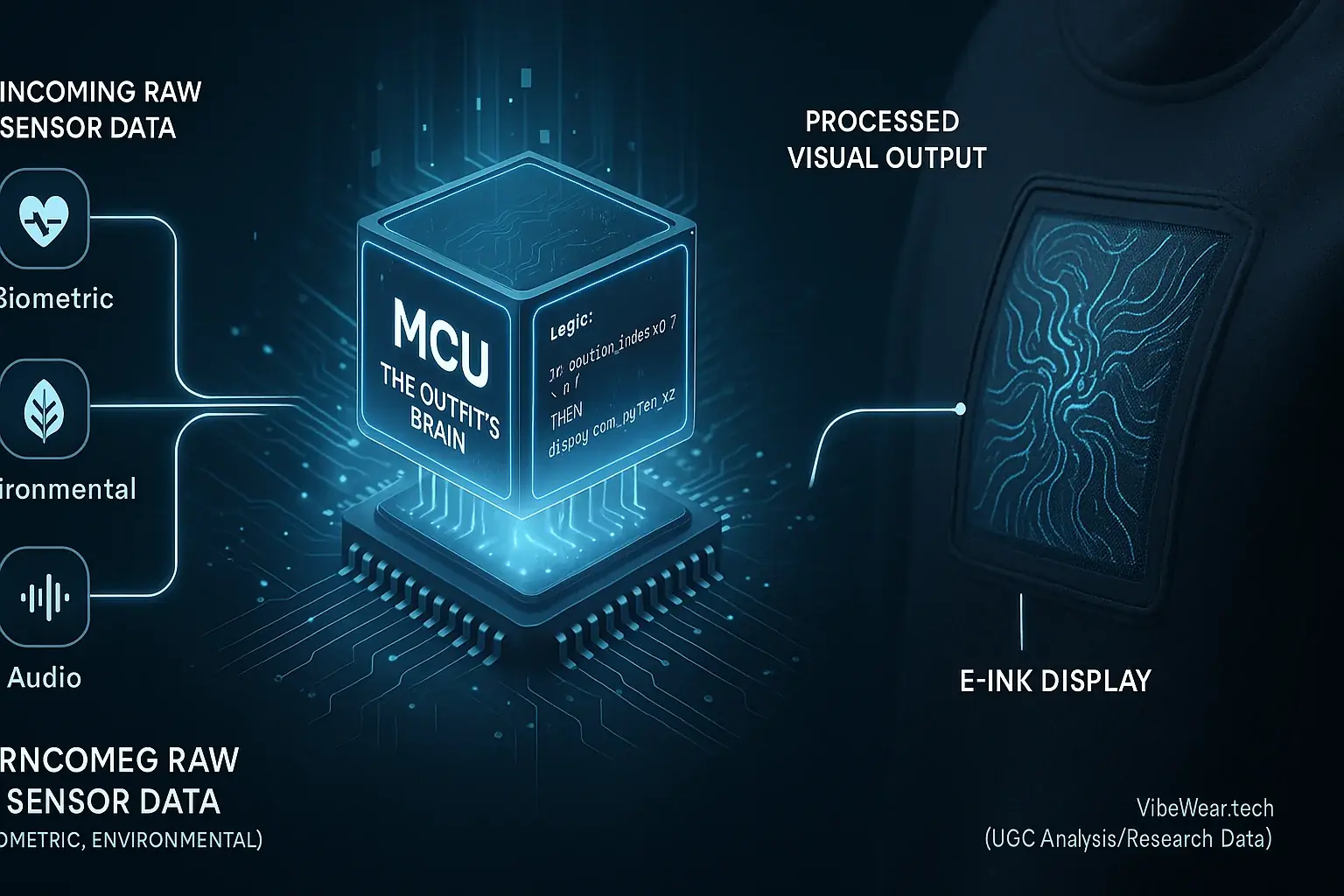
Microcontrollers act as your outfit's brain. They interpret raw data streams from various sensors embedded in the fabric. The magic starts here. This vital component translates abstract signals into understandable commands for your VibeWear.
The MCU continuously reads incoming information from your body or environment. Many DIYers think sensors do all the work; the unspoken truth is the MCU constantly crunches numbers. It decides what your outfit communicates. It applies pre-programmed logic, like 'if skin conductivity rises, then display an agitated pattern'. This prepares the final output for the E-Ink display.
Makers often choose Arduino or ESP32 boards for wearable projects. Why these controllers? Their accessible programming and ample processing power handle sensor interpretation. These MCUs expertly bridge the gap between collected emotional data and tangible visual expression. They empower your creative vision.
From Numbers to Nuance: Mapping Sensor Data to E-Ink Visuals

Data mapping translates feeling. Raw sensor numbers gain meaning. They become vibrant E-Ink displays. Your heart rate might be 75 BPM. How does that shift into a serene blue pattern on your sleeve? This process bridges internal states with outward expression. Art meets algorithm here.
This conceptual process defines fundamental connections. We establish thresholds for sensor inputs. These thresholds then map to specific visual states. Think distinct E-Ink patterns. Or, consider evolving color palettes. Design truly merges with data at this juncture. The unspoken truth? Effective mapping demands technical understanding. It also needs a designer's intuitive grasp of emotional expression.
Clear, intuitive mapping transforms user experience. Well-mapped data makes apparel feel truly adaptive. Not merely reactive. This stage empowers creators. DIY makers, especially, can inject deep personal meaning into their VibeWear. Their design choices give the garment its unique emotional signature. This is where technology becomes personal.
The Vibe Loop: How Your Mood Transforms into Dynamic Display
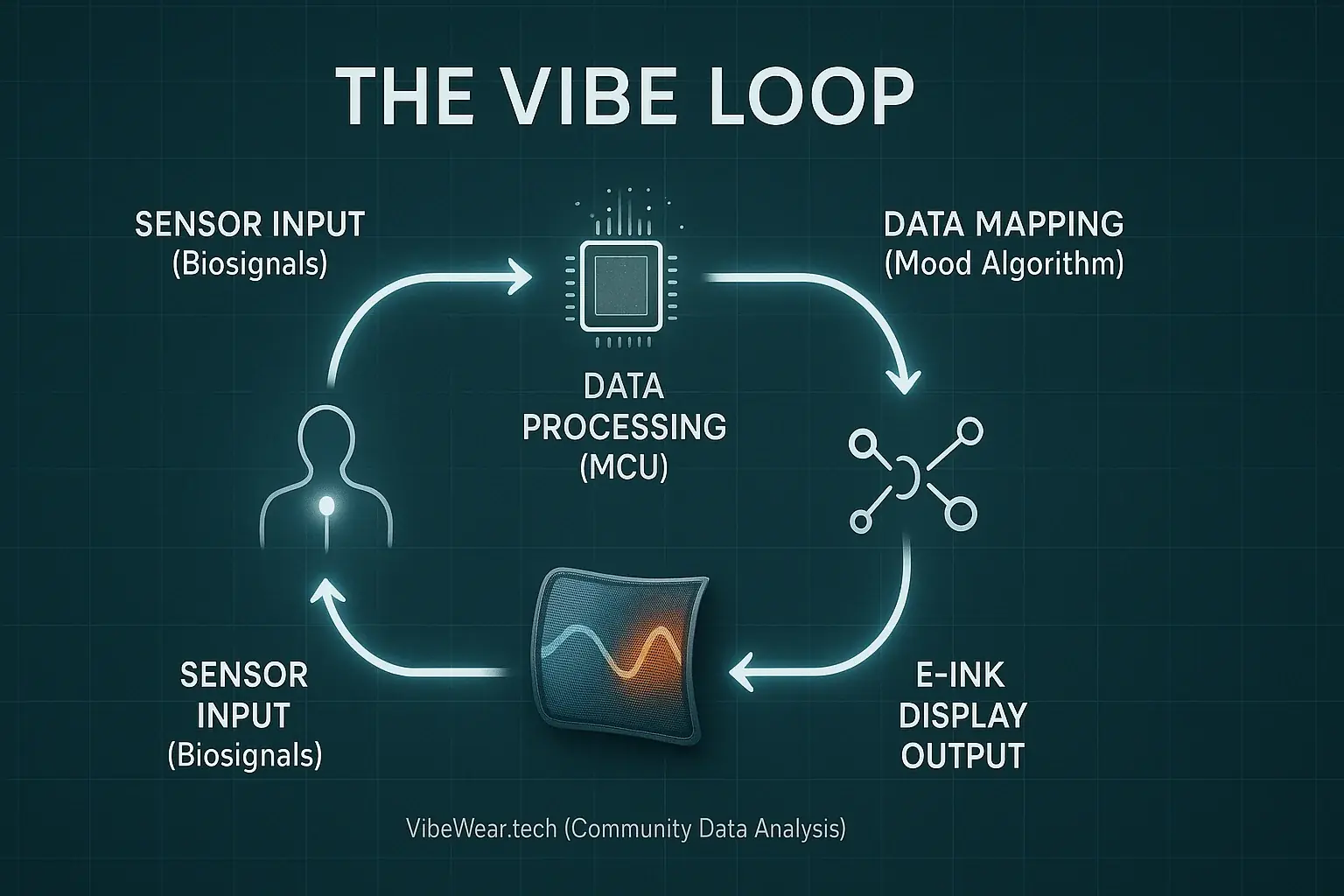
The Vibe Loop powers your adaptive streetwear. This system is not a simple one-way street for data. It's a constant, flowing cycle. A conversation. Your clothing senses, interprets, then displays your inner state.
Imagine you are walking into a crowded room. Your stress levels might subtly rise. A biosensor picks it up. The MCU processes this, mapping it to a new E-Ink display that shifts from calm waves to an energetic pulse. All in a blink.
This iterative cycle enables genuine adaptiveness. Your garment responds directly. It is more than a pre-programmed static display changing on a timer. This is dynamic, alive. For DIY VibeWear creators, understanding and mastering this Vibe Loop unlocks incredible potential; it is the ultimate goal.
The Wiring of Wonder: Basic Circuitry for Your VibeWear
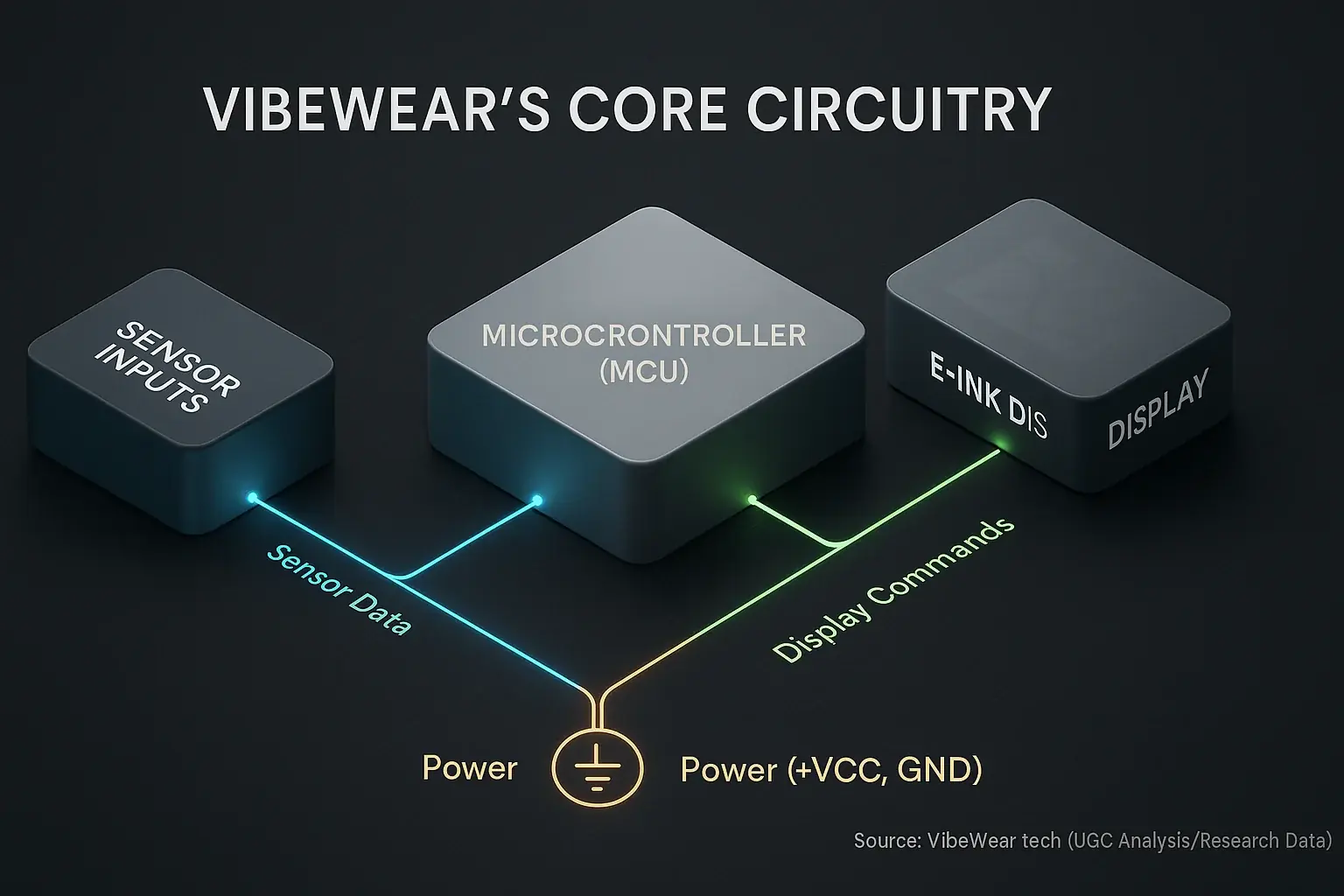
We've covered the 'brain' (microcontroller) and 'language' (E-Ink). Now, VibeWear circuitry needs its 'nervous system'. These are the physical electronic connections. Complex tech often relies on surprisingly simple links. No wires, no vibe.
VibeWear circuitry fundamentally involves three pathways. Sensors feed data to the microcontroller (MCU). The MCU then instructs the E-Ink display. Crucially, a power source energizes this entire system. Many DIYers find circuit diagrams daunting. The unspoken truth? At its core, it's just linking inputs to outputs, and supplying power. Imagine connecting smart LEGO bricks.
Reliable electronic connections are crucial for wearable electronics. Flexible wiring must withstand constant movement. Durability, perhaps even washability, becomes a design factor. Understanding these conceptual VibeWear circuitry blocks truly simplifies the entire build. This knowledge transforms complex tech into an achievable project.
The Code Canvas: Software Flow for Your Adaptive Masterpiece
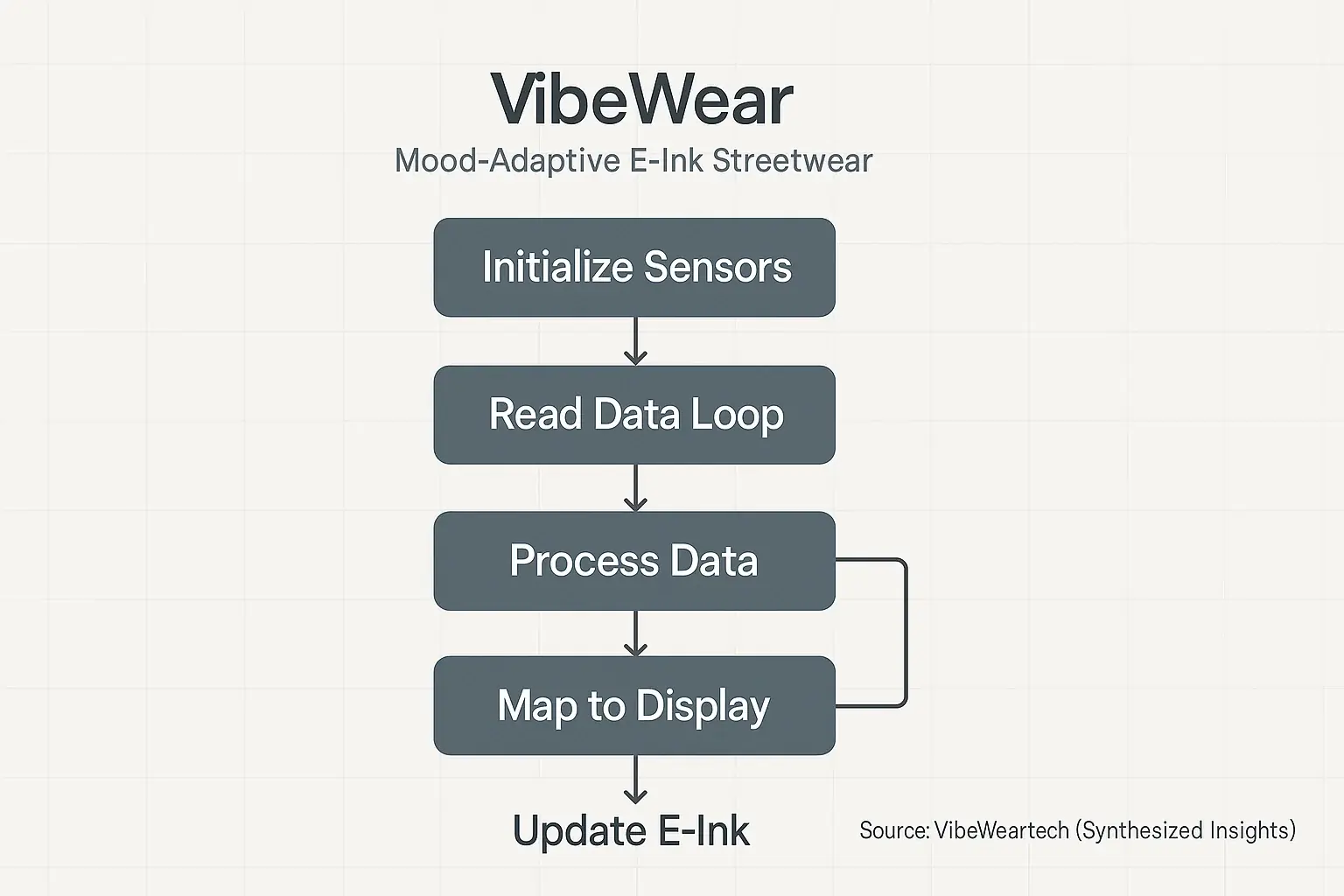
Hardware forms the visible body. Software is its mind. This code directs every function. It tells sensors when to listen. It commands the E-Ink display's every shift. Code brings your VibeWear to life. This invisible architecture enables genuine adaptation.
The VibeWear software flow begins with initialization. Then, a core loop executes constantly. Sensors gather data. Logic processes this input. Mapping rules translate emotion to pattern. The E-Ink display updates. Many DIYers chase flashy patterns first. The unspoken truth? A solid, efficient software loop is bedrock. Without it, your 'mood' remains a static image.
Platforms like Arduino IDE or MicroPython host your code. E-Ink libraries simplify display control. Clear, modular programming logic becomes crucial. It aids updates. It helps debugging. Understanding this conceptual VibeWear software flow empowers you. You create genuinely personal adaptive logic.
Navigating the Vibe: Common Interfacing Pitfalls & Smart Fixes
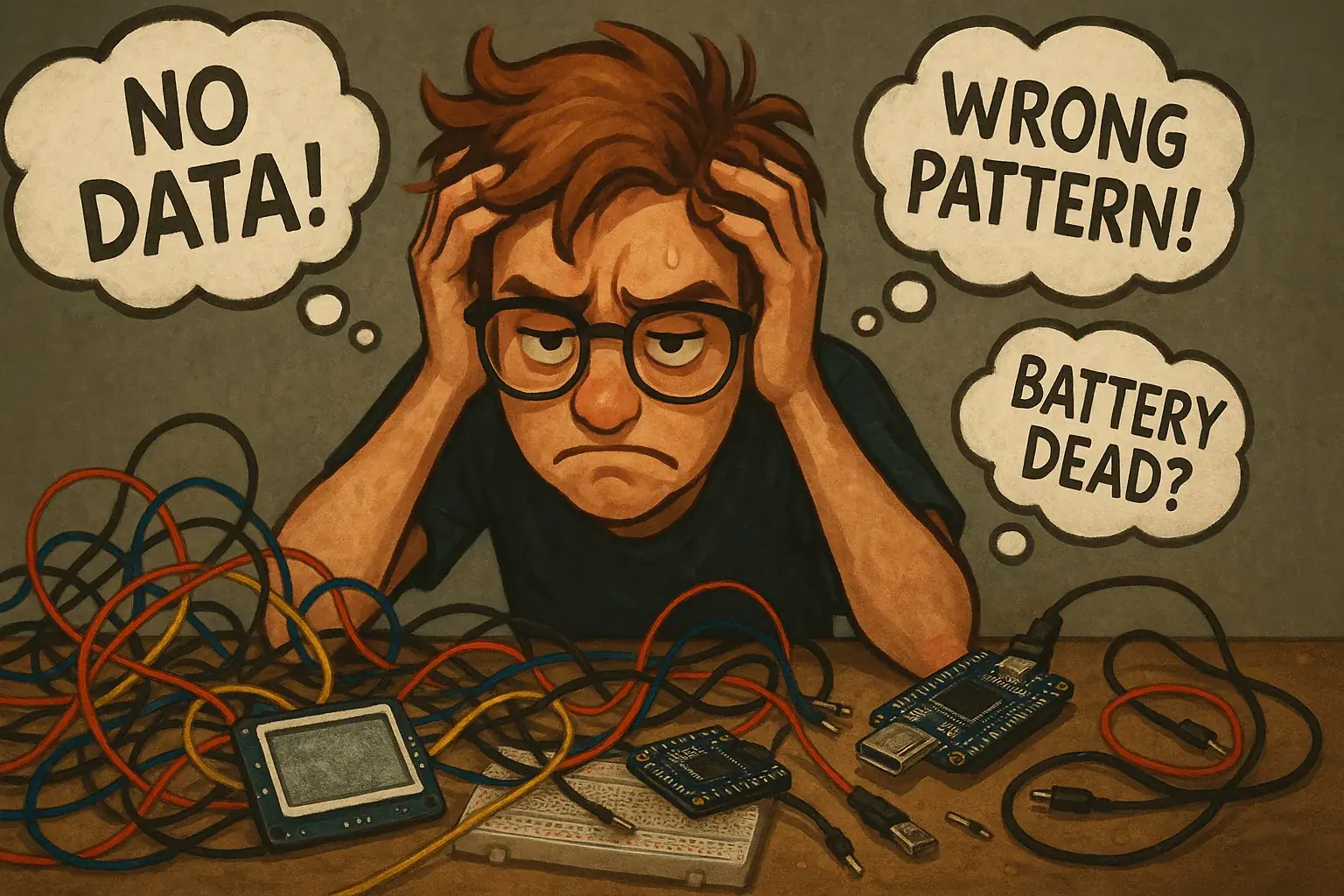
Ever had a project just... not work? It happens. Practical builds often hit unexpected snags. Interfacing sensors with E-Ink displays presents common, yet solvable, pitfalls for makers. Understanding these hurdles is the first step to overcoming them.
These are the unspoken truths of DIY electronics. Frustrating? Yes. But you are not alone. VibeWear’s close look at common maker experiences pinpoints these frequent issues and their fixes:
- ✅ Problem: No sensor data streams? Tip: Meticulously double-check all wiring connections and confirm stable power levels.
- ✅ Problem: E-Ink display remains blank or frozen? Tip: Verify your display initialization sequences and ensure correct refresh commands are sent.
- ✅ Problem: The wrong pattern appears on your E-Ink? Tip: Carefully review your data mapping logic between sensor input and display output.
- ✅ Problem: Intermittent glitches plague your project? Tip: Look for loose connections, power fluctuations, or potential software timing errors.
Debugging is part of creating. Iteration unlocks breakthroughs. Stuck? Online communities offer amazing support. Shared solutions abound. Persistence fuels your vision. Your unique VibeWear concept can become reality.
Beyond the Basics: The Future of Sensor-to-E-Ink Interfacing
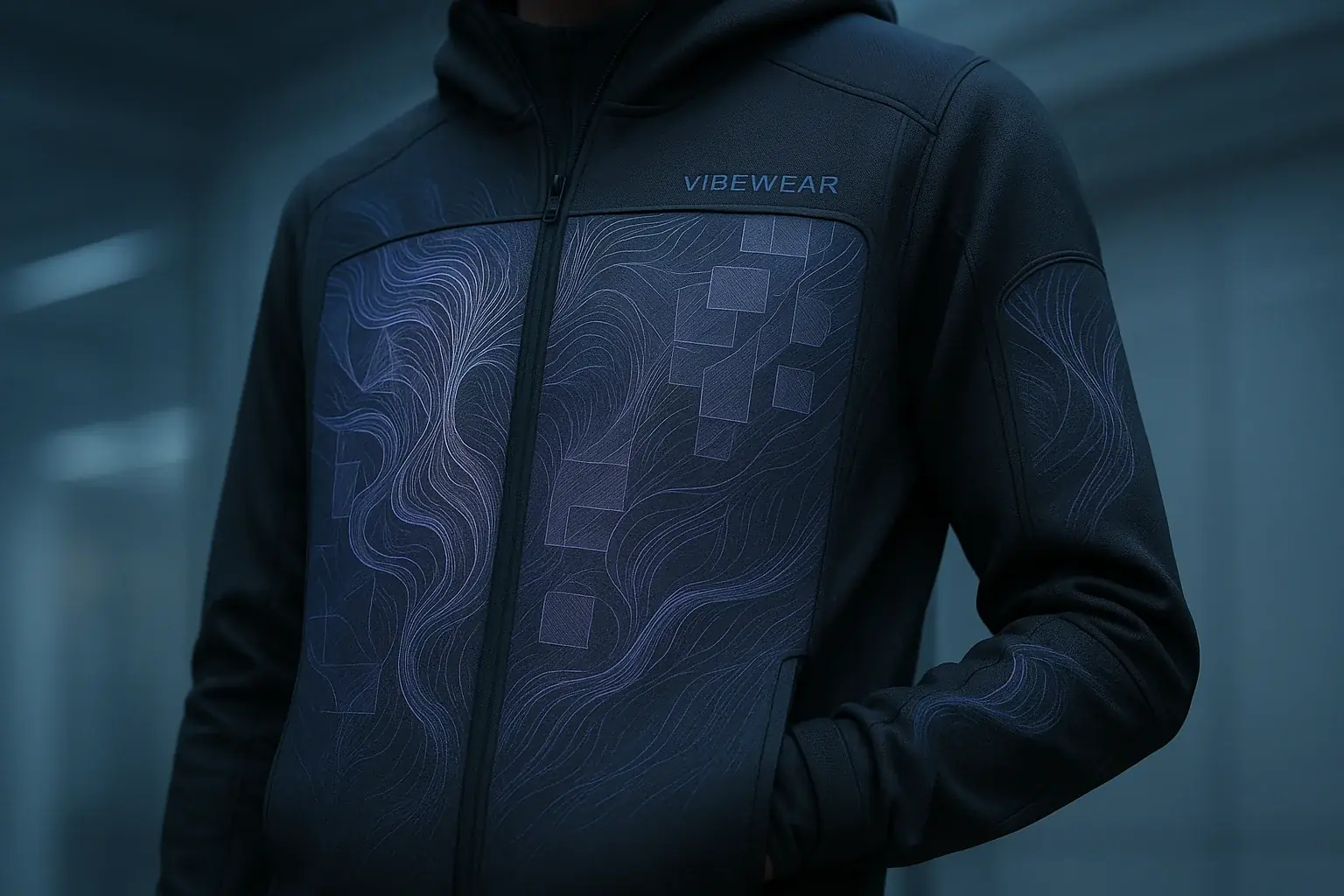
Current e-ink interfacing merely scratches the surface. VibeWear anticipates far greater potential developing. The true innovation waits for bold, creative exploration. Imagine what's next.
Sensor fusion will unlock richer, more complex data streams. This method combines inputs from multiple biometric points for deeper insight. VibeWear's analysis of community feedback interpretation suggests far more nuanced emotional displays are achievable. Instead of just 'happy' or 'sad,' your VibeWear might express 'thoughtful contemplation' or 'playful anticipation' by blending these multiple data streams. That is the power of advanced algorithms at play, pushing beyond simple responses.
Truly intuitive interactions define the coming wave in VibeWear. Your garment could soon anticipate your expressive needs with uncanny seamlessness. The boundaries of mood-adaptive technology constantly expand; this is a core VibeWear belief. This presents an exciting frontier for every creator. Makers should continue to innovate. Experiment fearlessly with these new interfacing possibilities.
Related Insight: Level Up Your Make: Advanced DIY E-Ink Streetwear Project Ideas
You now grasp sensor-e-ink interfacing, a gateway to vivid self-expression. Ready for deeper creation? Future VibeWear insights will spotlight advanced DIY projects, think multiple e-ink panels and complex sensor fusion.
Imagine garments reacting with intricate displays across several zones. Or wearables translating complex biometric data streams into evolving art. These advanced builds await your ingenuity.

